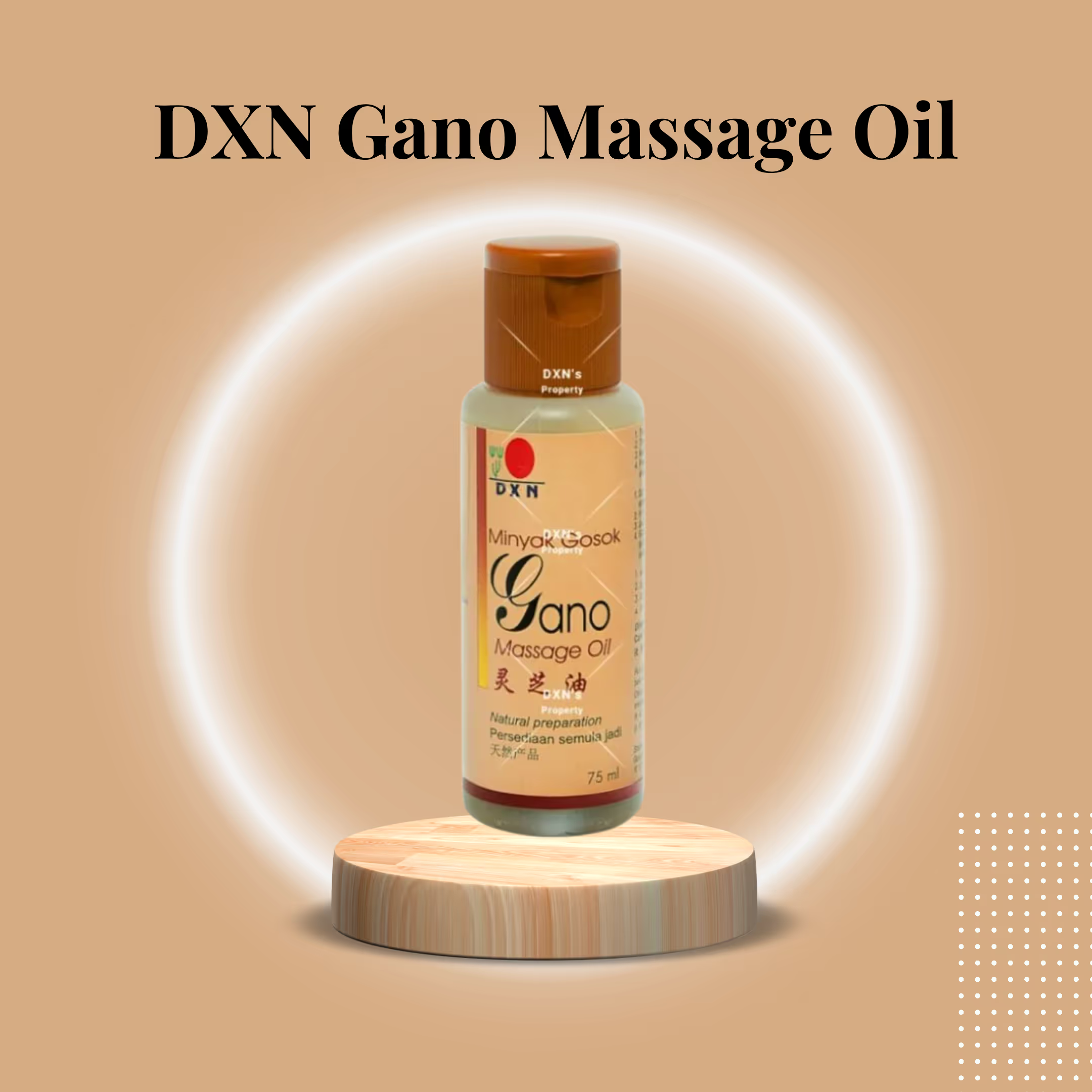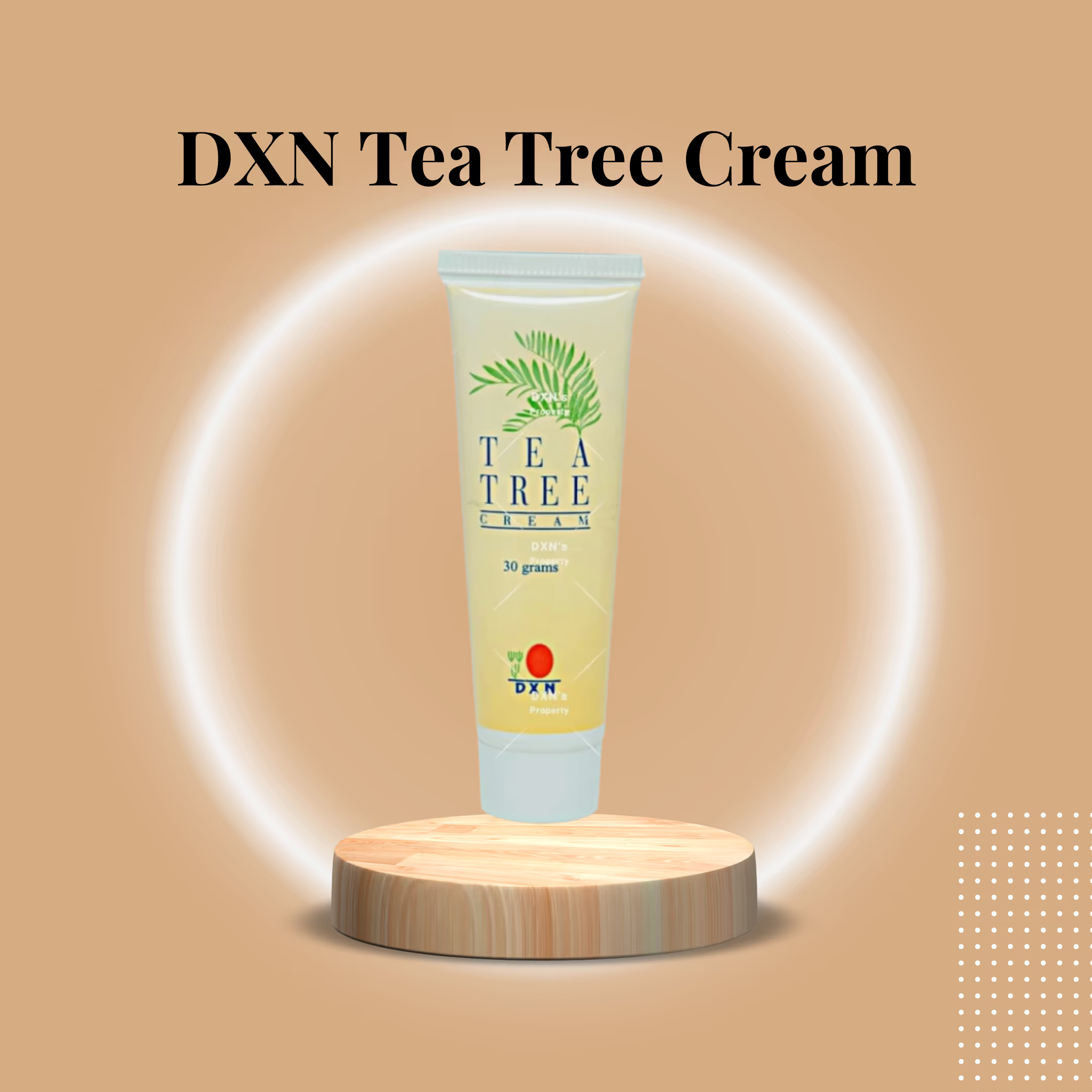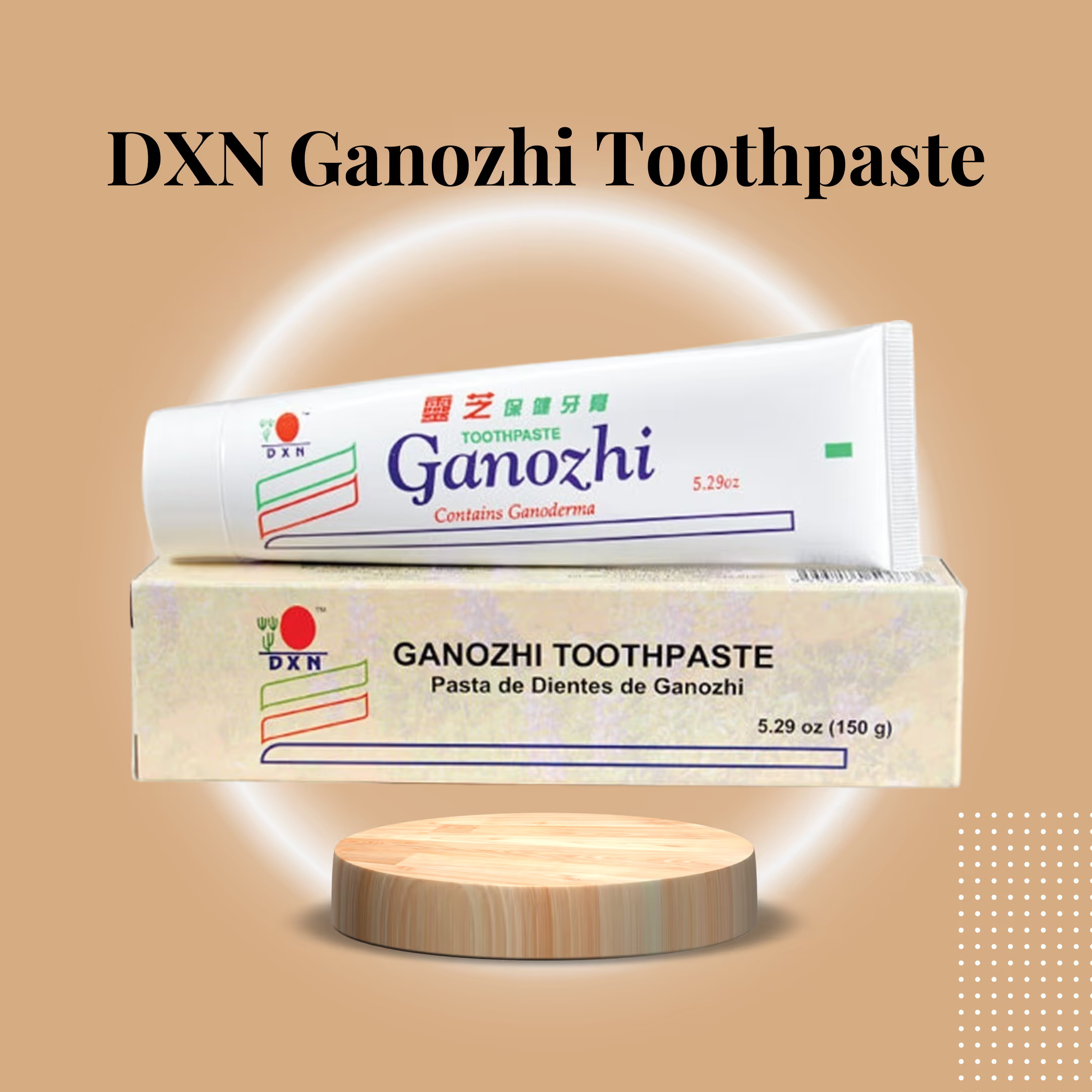What is DXN Gano Massage Oil?
DXN Gano Massage Oil is a purpose-built topical remedy specifically formulated to provide more than just basic massage lubrication. Its formulation centers on a high percentage of Ganoderma lucidum extract (commonly called Reishi) blended into a high-quality vegetable oil base (notably palm oil in many formulations). The finished product is marketed as a therapeutic massage oil designed to deliver anti-inflammatory, antioxidant, and skin-repairing benefits locally where it is applied. It’s described as lightweight, non-greasy, and fast-absorbing—qualities that make it practical for frequent use, whether for self-massage at home or professional application during treatments.
While many massage oils simply ease skin friction, this product intentionally combines a concentrated medicinal mushroom extract with a nourishing oil carrier to address both muscle/joint discomfort and skin health simultaneously.
The formulation at a glance: proportions and sensory profile
Typical presentations of this oil use a notable ratio: a concentrated Ganoderma extract blended at a significant percentage into a carrier oil. The result is an oil that:
- Has therapeutic intent (active botanical + carrier),
- Absorbs rapidly without leaving heavy residue,
- Possesses a natural scent rather than an overwhelming fragrance, and
- It is packaged in a practical size (commonly around 75ml) for trials or regular use.
Those attributes demonstrate that the aim is daily usability—easy to apply, pleasant enough to use frequently, and formulated to be more than just an accessory for relaxation.
Why Ganoderma? The mushroom behind the oil’s activity
A quick primer on Ganoderma’s active chemistry
Ganoderma lucidum contains several classes of bioactive compounds that are relevant to topical use:
- Triterpenes (including ganoderic acids): Known for anti-inflammatory and modulatory effects that can calm inflammatory signaling in tissues.
- Polysaccharides: These long-chain sugars can support moisture retention and contribute to regenerative responses in skin structures.
- Peptides and minor components: Contribute to antioxidant and protective properties.
Together, these molecules contribute to Ganoderma’s reputation as a calming, protective, and potentially restorative botanical. In topical use, triterpenes tend to be the most directly relevant for reducing localized inflammation and discomfort, while polysaccharides and other molecules help support skin hydration and health.
How these compounds act on muscle and joint discomfort
A central mechanism for pain and stiffness is inflammation—molecular signaling that sensitizes nerves, leading to swelling and a limited range of motion. Certain triterpenes can interfere with inflammatory signaling pathways (for example, NF-κB and MAPK in laboratory settings), reducing the release of pro-inflammatory cytokines. Applied topically and combined with massage, the oil’s actives are intended to reach the soft tissues and provide a localized calming effect that supports symptom relief and recovery.
The carrier: why good oil matters
DXN’s choice of a premium plant-based oil (commonly palm oil in this formulation) serves more than just a functional role as a solvent. High-quality carrier oils provide:
- Skin nourishment: Fatty acids, carotenoids, and vitamin E variants in the oil support barrier repair and hydration.
- Antioxidant capacity: Natural antioxidants help protect skin lipids and cells from oxidative stress.
- Improved delivery: Oils can help solubilize and carry lipophilic (oil-loving) compounds into and across the skin surface.
- Sensory properties: Fast absorption and a non-greasy feel increase user comfort and adherence.
The overall effect is synergistic: the carrier helps deliver actives while also restoring skin health and preventing dryness that can accompany frequent massage.
Benefits and practical purposes of DXN Gano Massage Oil
1. Localized pain relief and muscle recovery
When used in conjunction with massage techniques designed to stimulate circulation and relax muscle fibers, the oil helps reduce soreness and promote quicker recovery after exertion. It’s suitable for post-workout use or to ease daily stiffness.
2. Joint comfort and mobility improvement
Applied around stiff joints, the oil can contribute to a calm local environment that may improve movement comfort, particularly when integrated into routine daily care.
3. Skin conditioning and anti-aging support
The hydrating carrier oil, combined with Ganoderma’s polysaccharides, helps improve skin suppleness and moisture retention. Over time, this supports a smoother appearance and helps protect against oxidative damage associated with early aging signs.
4. Enhanced circulation and recovery via massage
The physical act of massage boosts blood flow and lymphatic activity; when combined with the oil’s properties, these effects are amplified—nutrients and oxygen reach tissues faster, and metabolic byproducts clear more efficiently.
5. Relaxation and mild aromatherapeutic effect
The oil’s natural scent and gentle feel make it well-suited to relaxation rituals, helping reduce stress and tension held in shoulders, neck, and jaw—common points associated with headaches or poor posture.
How it works—practical mechanisms during application
When you massage with this oil, several processes occur simultaneously:
- Mechanical stimulation loosens fascia and warms tissues, improving pliability.
- Increased microcirculation facilitates the delivery of oxygen and nutrients, as well as the removal of metabolic waste.
- Topical bioactives have a localized anti-inflammatory and antioxidant effect, reducing the chemical drivers of pain.
- Skin nourishment from the carrier oil strengthens the barrier, keeping the application area supple and allowing for deeper massage without micro-damage.
This combination creates both immediate sensations (less tightness, increased mobility) and longer-term benefits (improved skin health, reduced inflammation with repeated use).
Who benefits most from this oil?
- Athletes and active people seek faster recovery and relief from DOMS (delayed onset muscle soreness).
- People with chronic stiffness or mild joint discomfort are looking for a natural, adjunctive topical therapy.
- Individuals seeking relaxation rituals who prefer natural, non-synthetic products.
- Those wanting to support skin health with a product that doubles as a massage oil and moisturizer.
- Caregivers and massage therapists who value a therapeutic-grade product for treatment sessions.
As with any topical product, results vary by individual. Those with severe inflammatory disorders or acute injuries should seek medical advice before relying solely on topical remedies.
Application methods: maximizing benefit
Simple self-massage routine
- Warm the oil between your palms or briefly on the back of your hands. A little warmth increases comfort and absorption.
- Start broad: Use long, gentle strokes across larger muscle groups (such as the thighs and back) to increase circulation.
- Target tension: Follow with circular kneading or rhythmic compressions over tight points.
- Finish with light strokes toward the heart to promote lymphatic flow and drainage.
- Use daily for maintenance or after intense activity for recovery.
Professional massage techniques
- Swedish-style long glides (effleurage) to warm and prepare tissues.
- Kneading (petrissage) for deeper muscular release.
- Friction across adhesion areas for targeted release.
- Gentle stretching combined with oil to increase the range of motion.
Headache/temple technique
Apply a small amount and gently massage it into the base of the neck, shoulders, and temples using light pressure and slow, circular motions. Avoid direct pressure on sensitive or painful areas.
Frequency and routine recommendations
- Daily use: Recommended for chronic stiffness or joint discomfort and as part of relaxation rituals.
- Post-exercise: Use immediately after cool-down to help reduce muscle tension.
- As-needed: Use for episodic relief of cramps, headaches, or stress-induced tension.
Consistency matters—the oil’s cumulative benefits for skin and soft tissue health increase with regular use.
Safety and tolerability
- Perform a patch test first if you have sensitive skin or a history of plant-based allergies. Apply a small amount behind the ear or on the forearm and wait 24 hours.
- Avoid open wounds and sensitive mucous membranes. Do not use on broken skin.
- Consult a healthcare professional if you are pregnant, nursing, or under treatment for significant health conditions.
- Stop use if you experience severe irritation, burning, or allergic reaction.
Because the formulation is natural and often free from synthetic preservatives and fragrances, most users tolerate it well. Still, “natural” does not guarantee “non-allergenic,” so a mindful trial is sensible.
Comparing DXN Gano Massage Oil to conventional topical options
Versus OTC analgesic balms (menthol, capsaicin)
- Ganoderma oil emphasizes anti-inflammatory botanical action and skin nourishment, rather than strong counter-irritant sensations (such as cooling or burning). It’s often more calming and suitable for users who dislike intense topical sensations.
Versus mineral-oil-based massage oils
- High-quality botanical carriers offer nutritional benefits and are more beneficial for skin health than mineral oil, which primarily occludes without delivering antioxidants or fatty acids.
Versus prescription topical anti-inflammatories
- Prescription NSAID or steroid creams have proven clinical pathways and potency for certain conditions. Ganoderma oil is best viewed as a complementary, supportive topical therapy rather than a replacement for prescription medications for severe inflammation.
Evidence-informed perspective (practical and balanced)
While traditional use and emerging laboratory insights support Ganoderma’s anti-inflammatory and antioxidant properties, the topical efficacy of Ganoderma varies by concentration, formulation, and skin absorption. Combining a bioactive-rich extract with a nourishing oil, along with therapeutic massage, increases the likelihood that these lab-supported molecules will reach local tissues at meaningful levels—especially when used consistently.
Users frequently report positive outcomes, including reduced soreness, enhanced relaxation, and improved skin texture. These experiential reports align with the oil’s biochemical rationale: reducing local inflammation, improving blood flow, and supporting skin barrier health. However, expectations should be realistic—this is not a miracle drug, but rather a thoughtfully formulated, natural adjunct to recovery and self-care.
Pairing suggestions: how to incorporate DXN Gano Massage Oil into a broader wellness plan
- Pre- or post-workout: Apply post-workout as part of cooldown to support muscle recovery.
- Complementary products: Follow with a soothing lotion for extended moisturization, or combine with topical heat (a warm compress) before massage to enhance tissue relaxation.
- Internal support: Complement topical care with internal approaches for inflammation management: adequate hydration, balanced diet, and rest. If you use other DXN supplements internally (e.g., Ganoderma capsules), consider how topical and internal approaches can be aligned as part of a holistic regimen.
- Therapeutic sessions: Massage therapists can integrate this oil into routine treatments when clients seek both relief and skin nutrition.
Real-user considerations and feedback themes
Common user experiences reported in reviews typically emphasize:
- Immediate sensory pleasure: fast absorption, pleasant (mild) scent, no heavy residue.
- Short-term relief: decreased muscle tightness and improved mobility after massage.
- Skin benefits: softer skin and improved hydration.
- Relaxation: reduced perceived stress and improved sleep when used in evening routines.
As always, individual responses vary, and combining oil application with consistent self-care behaviors amplifies outcomes.
.avif)





